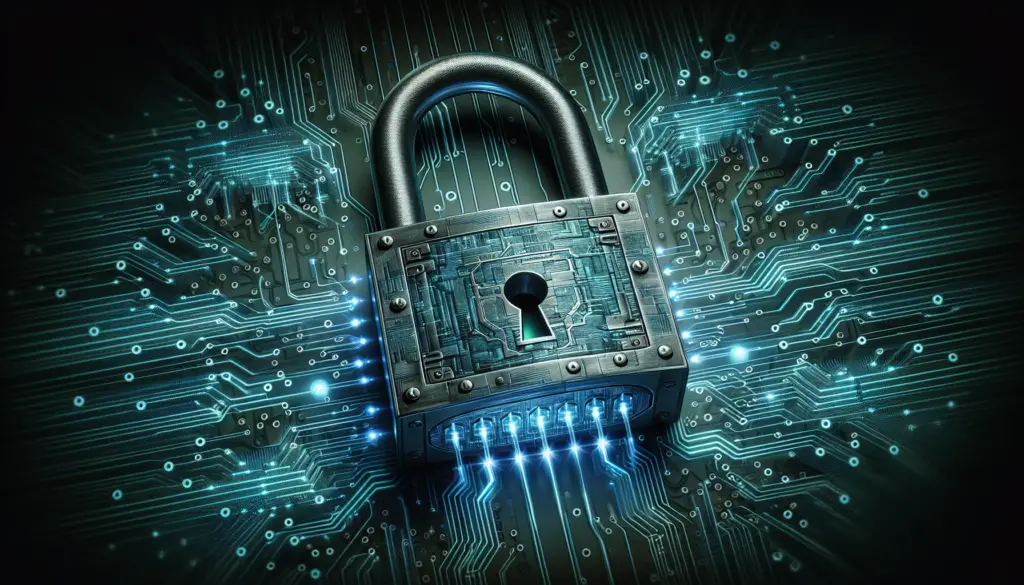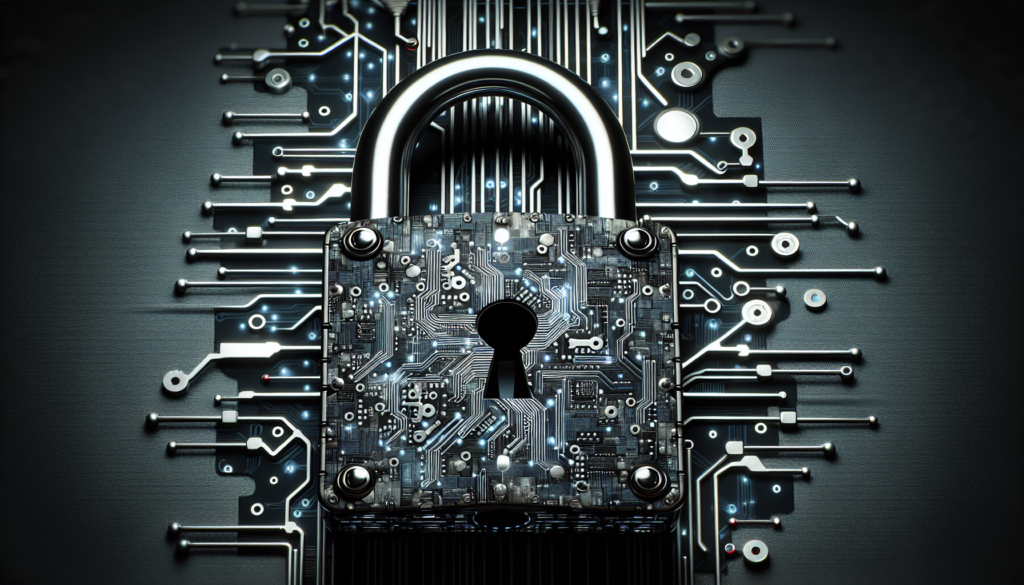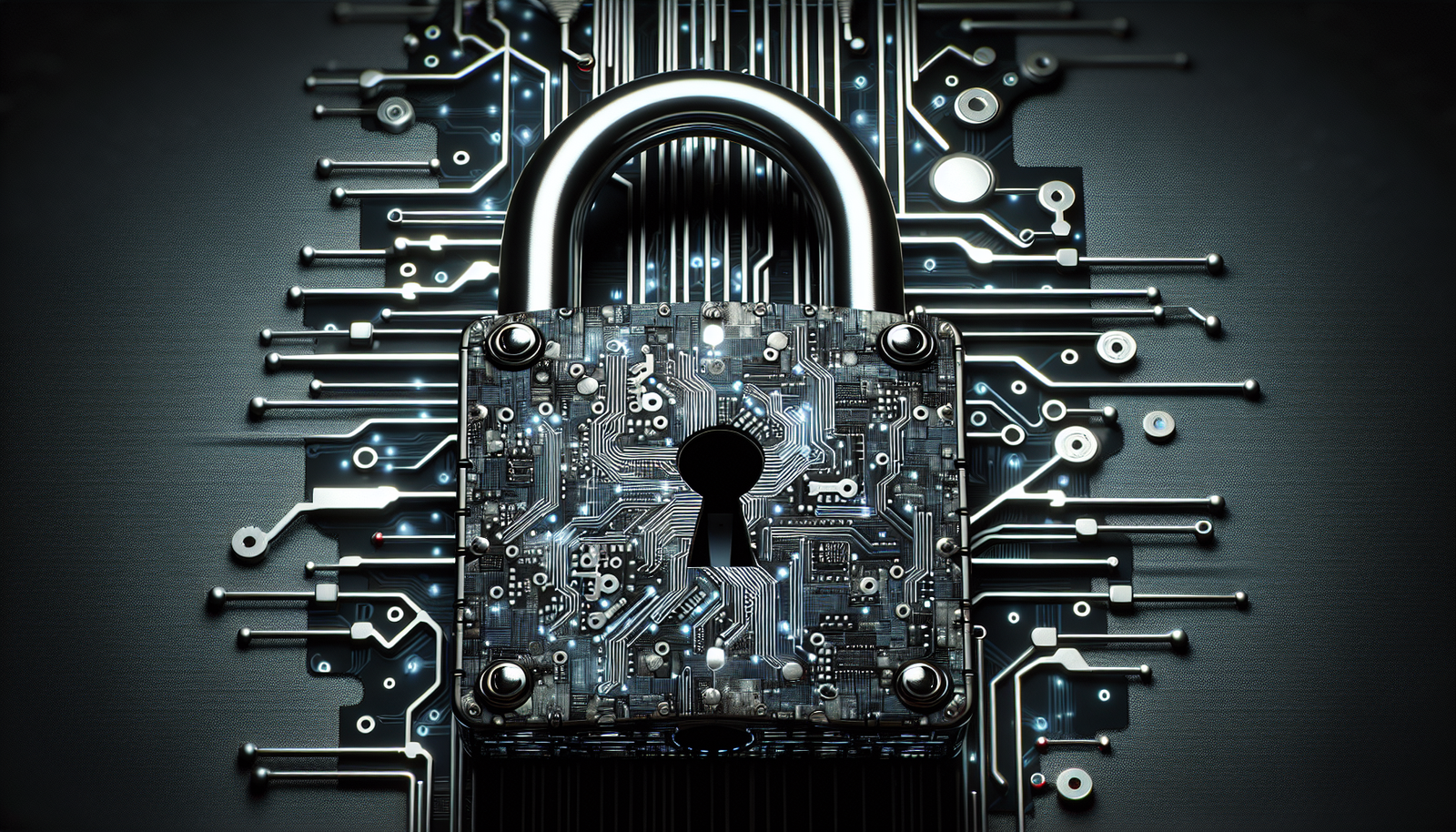In an age where your digital security is as crucial as locking your front door, mastering the art of crafting a strong password is key to safeguarding your online presence. “Securing Your Accounts: The Best Way to Create a Strong Password” serves as your personal guide to understanding the elements that constitute a robust password. By adhering to a few simple principles and tips provided in this article, you can significantly enhance the protection of your virtual vaults and ensure that your personal information remains under wraps, impervious to the prying eyes of cyber adversaries.
Understanding Password Vulnerabilities
Common types of password attacks
You may have heard about various methods hackers use to crack passwords. Some of the more common types include brute force attacks, where a hacker uses a program to try every possible combination of characters; dictionary attacks, which involve trying words from a list until a match is found; and credential stuffing, where stolen account credentials are used to gain unauthorized access. These methods are alarmingly effective, especially when targeting weak passwords.
Importance of password complexity
Your defense against these attacks is a strong, complex password. Password complexity can vastly reduce the chances of your password being cracked. The inclusion of various types of characters—letters (both uppercase and lowercase), numbers, and symbols—generates a high number of combinations, making it more difficult for an attacker to guess.
Risks associated with password reuse
Reusing passwords is like using the same key for your house, car, and office. If a hacker obtains one password, they’ve got the master key to all your accounts. This is why it’s essential to have unique passwords for each account—if one gets compromised, the others remain secure.
Social engineering and its impact on password security
Social engineering is a tricky aspect of password vulnerabilities. Hackers use psychological manipulation to trick you into divulging your passwords or other sensitive information. This could be through phishing emails, fake security questions, or pretexting. Honing a critical eye for suspicious requests and educating yourself on these tactics can help safeguard your password security.
The Role of Password Length
Minimum recommended password length
To protect your information securely, you should aim for a minimum password length of 12 characters. While this may seem like a lot, longer passwords exponentially increase the difficulty for attackers trying to crack them.
The relationship between password length and security
A direct relationship exists between password length and security: the longer the password, the more secure it typically is. Every additional character increases the number of permutations dramatically, providing much more robust protection against common password attacks.
Balancing length and memorability
You might worry that a long password is hard to remember, but there’s a sweet spot between length and memorability. You’ll want a password that’s both long enough to be secure and straightforward enough for you to recall without writing it down. We’ll discuss a strategy to achieve this balance shortly: the use of passphrases.

Complexity and Character Diversity
Incorporating upper and lowercase letters
Mixing up upper and lowercase letters within your passwords is a great way to enhance security. Capitalizing random letters—or better yet, following an unpredictable pattern—can make a world of a difference in protecting your accounts.
The inclusion of numbers and symbols
Just when a hacker thinks they’ve got the hang of your password structure, throw in a curveball with numbers and symbols. These characters can be placed randomly or used to replace certain letters, like ‘a’ with ‘@’ or ‘s’ with ‘5’, although more unpredictable placements are generally better for security.
Avoidance of predictable patterns
While it’s tempting to use comfortable patterns like ‘1234’ or ‘abcde’, or keyboard patterns like ‘qwerty’, doing so makes a hacker’s job much easier. Stay clear of dates, sequential numbers, and repeated characters. The less obvious your pattern, the better.
Randomness vs. complexity
Keep in mind that complexity implies unpredictability. While randomness is certainly a strong suit in password creation, creating a password so random that you can’t remember it without assistance might not be practical. It’s about finding the right balance between complexity and something you can remember.
The Use of Passphrases
Definition of a passphrase
A passphrase is essentially a longer version of a password, often comprising a sequence of words or a full sentence. This could be something like “PurpleElephantDancesUnderMoon!” which is not only lengthy and complex but also unusual and memorable.
Advantages of using passphrases
Passphrases strike an excellent balance by being both secure and memorable. They’re typically longer than traditional passwords, which adds security. Moreover, a well-constructed passphrase can be easier to remember than a cryptic password of random characters.
Creating strong but memorable passphrases
When creating a passphrase, think of something meaningful or whimsical to you, but not easily guessable by others. Use a mix of characters, and consider substituting some letters with numbers and symbols. For example, “MyDogSkippyLovesToPlayFrisbeeInSummer!” is both robust and memorable.
Examples of effective passphrases
Effective passphrases could be lines from an obscure poem, a random fact, or a personal statement—anything that’s a unique mix of words, numbers, and symbols. “BlueDragonsFlyOver2019Rainbows@Dawn!” is an example that would be hard to crack but still possible to remember.

Leveraging Password Managers
What is a password manager?
A password manager is a software tool designed to store and manage your passwords. It creates a secure vault that is locked with a single master password. With a password manager, you can generate and store highly secure passwords for all your accounts without the burden of memorizing them.
Benefits of using a password manager
Not only does a password manager relieve the stress of remembering numerous complex passwords, but it also helps to avoid the risk of using weak or duplicate passwords. Most managers have encryption capabilities that provide an additional layer of protection for your data.
Password managers and enhanced encryption
Your vault of passwords is typically protected by AES-256 bit encryption or another similar strong standard when using a reputable password manager. This means that even if a hacker accesses your password manager, decrypting your passwords without the master password is extremely difficult.
How password managers prevent phishing
Password managers come with a useful feature: they often autofill your password only on the legitimate website associated with it. If you land on a phishing site designed to look like the real deal, the password manager won’t autofill your information, which can be a clear signal that something’s amiss.
Implementation of Two-Factor Authentication (2FA)
Understanding 2FA
two-factor authentication (2FA) is a security process in which users provide two distinct forms of identification before accessing their account. This method combines something you know (like a password) with something you have (like a smartphone or security token), making it much more difficult for unauthorized users to gain access.
Types of 2FA methods
2FA can involve a range of methods, including text messages with one-time codes, authentication apps generating time-based codes, or hardware tokens that produce codes at the push of a button. Biometric verification, like your fingerprint or facial recognition, is also a form of 2FA.
How 2FA complements strong passwords
While a strong password is a critical first step, 2FA adds an extra layer of defense. Even if a hacker manages to obtain your password, the chances they also have access to your second factor of authentication are slim, making unauthorized entry into your account significantly more challenging.
Setting up 2FA on popular platforms
Most popular platforms, like social media, email providers, and banking apps, offer some form of 2FA. Setting it up typically involves accessing the security settings of your account and following the prompts to link your account with the 2FA method of your choice.
Utilizing Multi-Factor Authentication (MFA)
Difference between 2FA and MFA
Multi-factor authentication (MFA) is an extension of 2FA, requiring more than two factors for authentication. MFA might involve passwords, security tokens, biometric verification, and sometimes location-based factors to ensure that access is as tight as possible.
Examples of MFA in practice
A common MFA setup could involve entering your password, receiving a code on your smartphone, and then using your fingerprint to authenticate. You might encounter this level of security in high-risk environments, like corporate networks or during online transactions.
The security benefits of MFA
MFA provides robust defense because it layers multiple obstacles for an unauthorized user to overcome. Even if one factor is breached, the integrity of your account is maintained by the additional security layers.
MFA and user convenience
It’s true that MFA can sometimes add a few extra steps to the login process, but many users find the trade-off for heightened security is well worth it. Many platforms allow for the “remember this device” feature, which can streamline subsequent logins on trusted devices.
Password Security Hygiene
Regular password updates and maintenance
Good password hygiene includes changing your passwords periodically and ensuring they remain strong and unique. Keeping track of when you last updated passwords can prevent your accounts from becoming vulnerable over time.
Handling password recovery options securely
Password recovery options should be secure and up-to-date. Avoid using easily guessable information like your mother’s maiden name or your pet’s name unless you modify them with unpredictable letters, numbers, and symbols.
Best practices for security questions
When setting up security questions, consider using answers only you would know or could readily recall but aren’t easily discovered or guessed by someone else. Treat these answers as additional passwords, applying the same principles of complexity.
Monitoring account activities for breaches
Stay vigilant about monitoring your account activities. Many services offer logs of recent logins, including the location and device used. If something looks unfamiliar, look into it immediately, as it may be an indication of a breach.
Staying Informed on Latest Password Security Trends
Keeping abreast of new hacking techniques
Hackers are continuously evolving their methods. Keeping informed about the latest hacking techniques can help you understand how to protect your passwords and other sensitive information effectively.
Understanding the impact of data breaches
It’s crucial to understand how data breaches occur and their consequences. This knowledge can inspire you to take password security more seriously and make informed decisions about protecting your data.
Evolving password standards and guidelines
Password standards and best practices are constantly evolving. Pay attention to current guidelines from cybersecurity experts to ensure your password creation strategy isn’t outdated.
Learning about emerging security technologies
Technological advancements often include new security measures. Stay curious and informed about technologies, such as biometric authentication or blockchain, that could further revolutionize password security.
Educating Others About Password Security
Teaching friends and family about secure passwords
Sharing your knowledge can help protect those you care about. Teach your friends and family about the importance of creating and maintaining strong, unique passwords.
Password security in the workplace
For those you work with, championing password security can protect not only individual employees but also the company’s confidential data and resources. Advocate for training and the use of tools such as password managers.
Creating a culture of security awareness
Encouraging a culture of security awareness in your circles can lead to safer online behavior collectively. Discussing the latest threats, solutions, and protective measures promotes proactive thinking.
Role of password security in protecting personal information
Your passwords are the keys to your digital life. By creating strong, unique passwords, and taking other security measures, you’re defending more than just your online accounts—you’re safeguarding your personal information from falling into the wrong hands.

